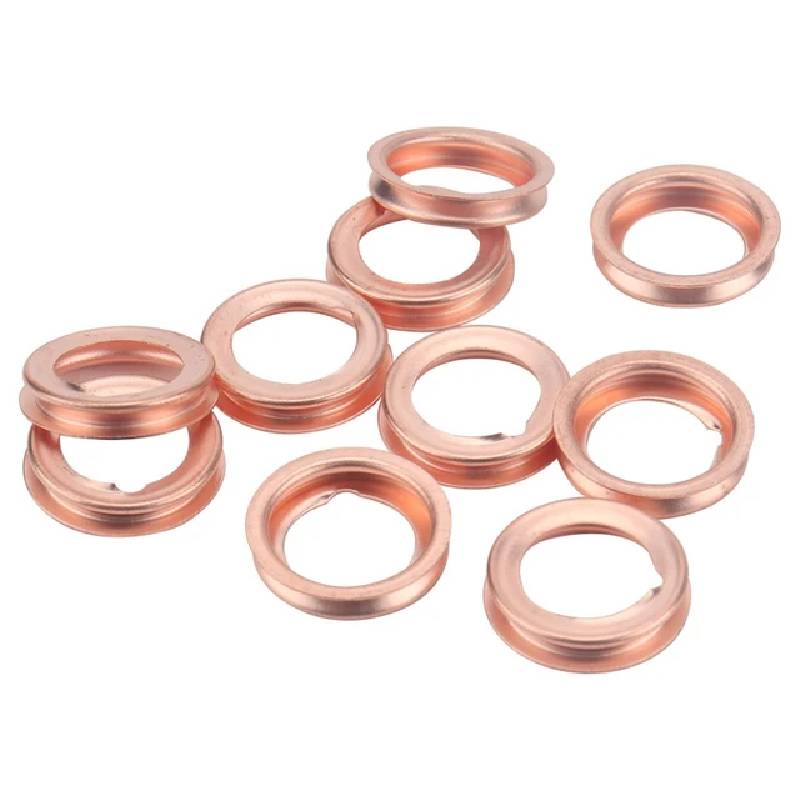Understanding Retainer Oil Seals and Their Importance in Mechanical Applications
Understanding Retainer Oil Seals Importance and Applications
Retainer oil seals, also known simply as oil seals, are crucial components used in various mechanical applications to prevent the leakage of lubricants, oils, and fluids from machinery. They play a significant role in maintaining the integrity and efficiency of machines, particularly in environments where fluids must be contained under pressure. In this article, we will delve into the functionality, construction, types, and applications of retainer oil seals, highlighting their importance in different industries.
What is a Retainer Oil Seal?
A retainer oil seal is a mechanical device designed to seal lubricants within rotating or moving parts of machinery while also protecting these parts from external contaminants such as dirt, dust, and water. Typically made from rubber or synthetic materials, oil seals consist of a circular outer body that fits snugly into a housing and a lip that exerts pressure against a shaft or surface to create a seal.
Functionality
The primary function of retainer oil seals is to prevent the escape of lubricating fluids under high pressure. As machinery operates, parts can generate significant heat and friction, which necessitates the use of lubricants to reduce wear and tear. An effective oil seal ensures that these lubricants remain in place, thereby enhancing the life of the machinery and its components.
Additionally, oil seals protect the internal components from external contaminants. If contaminants infiltrate the machinery, they can cause damage, leading to costly repairs and downtime. A properly installed retainer oil seal acts as a barrier, preserving the equanimity of the lubricant and the efficiency of the machinery.
Construction of Retainer Oil Seals
Retainer oil seals generally consist of three primary components
1. Outer Frame The rigid outer structure is designed to fit tightly into the housing of the machine. This frame provides stability and support to the seal.
2. Elastomeric Lip The elastomeric lip is the part that contacts the rotating shaft or surface. This lip is designed to provide a tight seal under various pressures, preventing fluid leakage.
3. Spring Mechanism Many oil seals incorporate a spring to apply specific pressure to the lip against the shaft. This mechanism ensures a constant seal, compensating for any wear and maintaining the integrity of the seal over time.
Types of Retainer Oil Seals
retainer oil seal

There are various types of oil seals designed for different applications, including
- Single Lip Oil Seals The most common type, used where sealing against single directional flow of fluids is required.
- Double Lip Oil Seals These seals provide enhanced protection against contamination by having two lips, effectively minimizing the risk of leaks.
- Metal Outer Casing Seals These seals are designed for high-pressure applications, providing additional strength and durability.
- Multi-lip Seals Featuring multiple sealing lips, these seals can manage different types of lubricants and provide superior contamination protection.
Applications
Retainer oil seals are utilized in a wide range of industries, including
- Automotive Used in engines, transmission systems, and differentials, oil seals prevent the escape of lubricants and protect internal components from contaminants.
- Industrial Machinery Employed in various manufacturing equipment, oil seals ensure machinery operates smoothly by minimizing fluid leakage.
- Aerospace In aircraft engines and other crucial systems, oil seals help maintain operational efficiency and safety.
- Hydraulic Systems Retainer oil seals are essential for hydraulic cylinders and pumps, ensuring reliability and preventing leaks under pressure.
Conclusion
Retainer oil seals play an indispensable role in a wide array of mechanical systems. By effectively preventing fluid leakage and protecting against external contaminants, these seals help maintain the functionality and longevity of machinery. Their importance across multiple industries underscores the necessity of employing high-quality seals tailored for specific applications. Understanding the characteristics and applications of retainer oil seals is essential for engineers and maintenance professionals alike, ensuring they select the right solutions for their operational needs.
-
Understanding the Front Main Engine Seal: Purpose, Maintenance, and Installation
News Jul.29,2025
-
Understanding O-Rings and Seal Rings: Types, Applications, and Custom Solutions
News Jul.29,2025
-
Understanding Crankshaft Oil Seals: Rear Seals, Pulley Seals, and Their Role in Engine Integrity
News Jul.29,2025
-
The Importance of Front and Rear Crankshaft Seals in Engine Performance and Oil Management
News Jul.29,2025
-
Crank Oil Seals: Functions, Types, and Cost Considerations in Engine Maintenance
News Jul.29,2025
-
A Comprehensive Guide to O-Rings and Seals: Types, Materials, and Global Applications
News Jul.29,2025
-
Mastering Diesel and Performance Engine Maintenance: A Guide to Critical Oil Gaskets
News Jul.28,2025
Products categories















